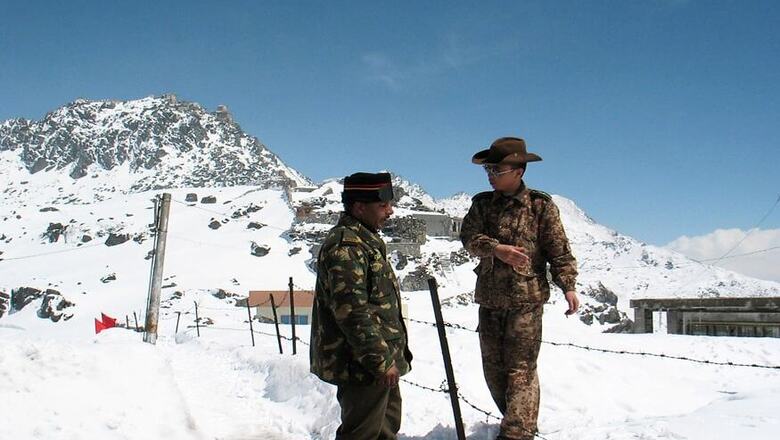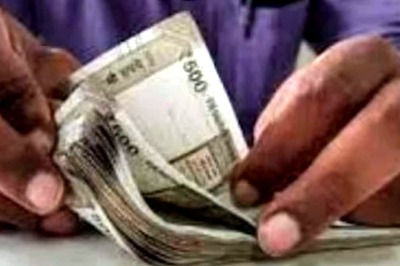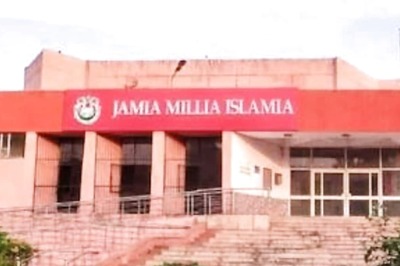
views
The recent Sino-Indian standoff in the Doklam region is due to China's long-standing proclivity, in disregard of all understandings and agreements, to unilaterally change the ground situation in its favour.
In the instant case, its efforts to build a road in Doklam close to the tri-junction point of India, Tibet and Bhutan were thwarted by India.
Such Chinese activity was unwarranted as its claims on Tibet's boundary with Bhutan have for long been under discussion between the two countries. Both countries, under their 1988 and 1998 agreements, are committed to maintain peace and tranquility in the area pending final settlement of the boundary question and to refrain from taking any unilateral action or use of force to change the status quo. Additionally, the 2012 Sino-Indian agreement makes it clear that the tri-junction boundary point between India, Bhutan and Tibet will be finalised in consultation between them.
India's coming out in support of Bhutan on this issue should not be surprising to anyone given their historically close ties and above all their 2007 Treaty of Friendship which specifically provides that the two sides will "cooperate closely with each other on issues relating to their national interests." Moreover, any Chinese acquisition of Bhutanese territory in this area is strategically damaging to India as it enhances the vulnerability of the Siliguri corridor.
Though transgressions by China across the Line of Actual Control are relatively frequent resulting in face-offs, the issue is usually amicably resolved within a relatively short time and little or no publicity. On this occasion, however, the face-off has continued for over a month and been accompanied by unprecedented Chinese bellicosity. China has, for instance, demanded Indian troop withdrawal as a precondition for talks to resolve matters, turned back Indian pilgrims assembled at Nathu La for the Kailash Mansarovar Yatra, threatened all out war across the Line of Actual Control, undertaken well-publicised military exercises in Tibet, and even held out the possibility of separating Sikkim from India. Such an approach ill behoves a responsible power. Muscle flexing by a massive, mighty China against a puny, peace-loving Bhutan only serves to demonstrate that the former is a regional bully.
India, on its part, has handled a difficult situation with calm and confidence and not been rattled by China's shrill campaign. While being firm, it has kept the rhetoric down. While making it abundantly clear that it will not back down it has, at the same time, held out for talks to defuse the situation. This quiet confidence stems from the fact that it is well positioned to give China a bloody nose should it engage in any military adventurism, particularly in the Doklam region. Some earlier Indian governments have been able to punish China in similar standoffs most notably in 1967 at Nathu La and Cho La, and in 1987 at Sumdurong Chu.
China's recent heightened bellicosity towards India is, perhaps, influenced by three factors. First, Xi Jinping's decisive abandonment of the more passive "hide your strength, bide your time" style which characterised Deng Xiaoping's foreign policy, in favour of the more muscular "Big Country Diplomacy". Second, India's refusal to fall in line with China's demands on issues like OBOR, the Malabar exercises, the Dalai Lama's visit to Arunachal, including Tawang, coupled with its position on the South China Sea and outreach to countries on China's periphery like Japan, Vietnam, South Korea, Mongolia etc. Finally, an effort to test the nerve of the Modi government.
It is only a matter of time before the standoff in Doklam is resolved. It is also reasonable to assume that, notwithstanding the Chinese hype, diplomats of both sides have been in touch all along. Though Ajit Doval is visiting China in the context of BRICs there is little doubt that he will have detailed discussions with the Chinese on this issue. In this context, it is to be noted that his upcoming visit has been welcomed in the local media. Admittedly, a solution may be more difficult than usual as with its high-pitched anti-India campaign China has painted itself into a corner but it will ultimately have to bite the bullet and withdraw.
Three lessons need to be drawn from this exercise. First, we need to be on constant alert to push back on any territorial transgressions by China because it is habituated to engaging in land grab by creating realities on the ground by way of constructing roads and infrastructure. Second, military capabilities need to be rapidly upgraded to deter China. Our current military spending, pegged at, perhaps, nearly an all-time low of 1.6% of GDP simply will not do.
Finally, we must learn to bring to bear all our leverages to make China think twice before it seeks to take us on. For instance, a boycott of Chinese goods would dent its finances by around $50 billion annually which is the extent of our trade deficit with China and simultaneously help revive many Indian industries which have had to shut down due to cheap Chinese imports. There are, in addition, many more radical measures which could be considered which could affect China even more adversely.
(Satish Chandra is the former deputy National Security Advisor. Views expressed are personal)

















Comments
0 comment